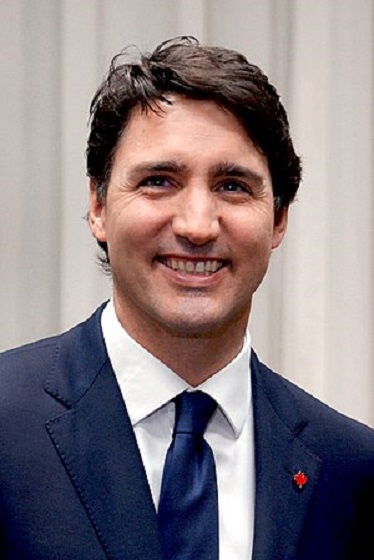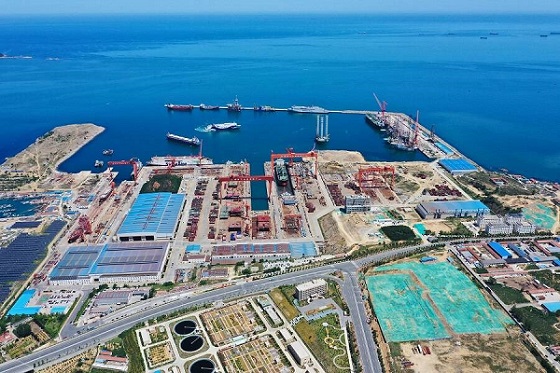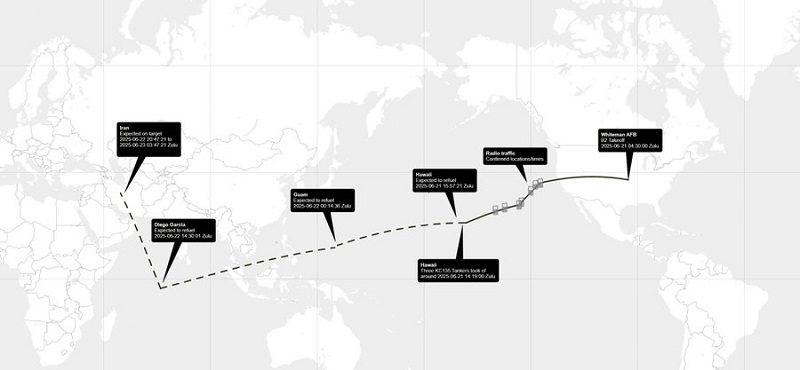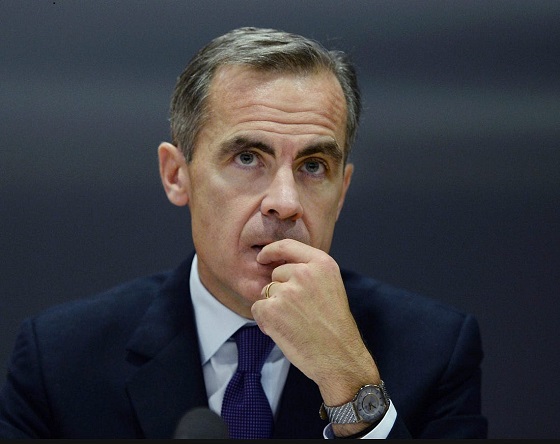Business
High Taxes Hobble Canadian NHL Teams In Race For Top Players

From the Frontier Centre for Public Policy
By Lee Harding
Canada’s steep income taxes leave NHL players with less cash in their pockets, putting Canadian teams at a serious disadvantage against their U.S. rivals. Find out why it’s not just bad luck that Canada hasn’t won the Stanley Cup in decades.
NHL commissioner Gary Bettman badly underestimates how much higher income taxes in Canada put Canadian teams at a serious competitive disadvantage by reducing players’ take-home pay and limiting their ability to attract top talent.
The NHL salary cap limits how much teams can spend on player salaries each season, so higher taxes mean players on Canadian teams effectively take home less money for the same salary, putting those teams at a disadvantage when competing for talent.
In a recent TNT broadcast, Bettman dismissed the idea that teams might adjust the salary cap to offset income tax differences, calling it “a ridiculous issue” and saying taxes were only “a little bit of a factor.” Pointing to high state taxes in California and New York, he asked, “What are we going to do? Subsidize those teams?”
What Bettman either ignored or didn’t understand is that every Canadian NHL player faces significantly higher income taxes than any of their U.S. counterparts. According to the Fraser Institute’s 2023 study, Ontario’s top marginal tax rate is 53.5 per cent, and even Alberta’s is 47 per cent. Compare that to the highest U.S. state rate among NHL locations—Minnesota at 41.85 per cent, California at 41.3 and New York at 38.85. Several states, including Florida, Texas, Nevada and Tennessee, impose no state income tax at all.
This tax gap translates into huge differences in players’ actual take-home pay, the money they keep after taxes. With a 2024-25 NHL salary cap of US$88 million, Toronto Maple Leafs players collectively earn $5.7 million less after taxes than Edmonton Oilers players, and a staggering $18.9 million less than players on the tax-free Florida Panthers. That difference alone could sign a star player and shift competitive balance.
Leafs fans frustrated by two decades of playoff disappointment should look less to coaches and management and more to Canada’s punishing tax system that drives talent south of the border or limits how much teams can pay. Lower taxes are a proven magnet for high-priced talent, driving better results and stronger teams.
University of Calgary economist Trevor Tombe calls this the “great divergence,” referring to the growing gap between the U.S. and Canadian economies. He points out that U.S. GDP per capita outpaces Canada’s by 43 per cent, and the gap is widening. This economic advantage means U.S. teams operate in wealthier markets with more financial flexibility, enabling them to offer players better after-tax compensation and attract top talent more easily than Canadian teams can.
Canadian teams also face more intense media and fan pressure in smaller markets, adding to their challenges. The NHL’s prolonged Stanley Cup drought for Canadian teams since 1993 isn’t just bad luck. Statistically, the odds of no Canadian team winning the Cup in over 30 years are about one in 781. Tax policy plays a major role in this unlikely streak.
Don’t blame Bettman or the NHL. Blame the Canadian governments that keep imposing high taxes that punish success, stifle economic growth and keep Canadian teams from competing on a level playing field. Unless tax policy changes, Canadian hockey fans should expect more frustration and fewer championships.
Lee Harding is a research fellow for the Frontier Centre for Public Policy.
Alberta
Canadian Oil Sands Production Expected to Reach All-time Highs this Year Despite Lower Oil Prices

From Energy Now
S&P Global Commodity Insights has raised its 10-year production outlook for the Canadian oil sands. The latest forecast expects oil sands production to reach a record annual average production of 3.5 million b/d in 2025 (5% higher than 2024) and exceed 3.9 million b/d by 2030—half a million barrels per day higher than 2024. The 2030 projection is 100,000 barrels per day (or nearly 3%) higher than the previous outlook.
The new forecast, produced by the S&P Global Commodity Insights Oil Sands Dialogue, is the fourth consecutive upward revision to the annual outlook. Despite a lower oil price environment, the analysis attributes the increased projection to favorable economics, as producers continue to focus on maximizing existing assets through investments in optimization and efficiency.
While large up-front, out-of-pocket expenditures over multiple years are required to bring online new oil sands projects, once completed, projects enjoy relatively low breakeven prices.
S&P Global Commodity Insights estimates that the 2025 half-cycle break-even for oil sands production ranged from US$18/b to US$45/b, on a WTI basis, with the overall average break-even being approximately US$27/b.*
“The increased trajectory for Canadian oil sands production growth amidst a period of oil price volatility reflects producers’ continued emphasis on optimization—and the favorable economics that underpin such operations,” said Kevin Birn, Chief Canadian Oil Analyst, S&P Global Commodity Insights. “More than 3.8 million barrels per day of existing installed capacity was brought online from 2001 and 2017. This large resource base provides ample room for producers to find debottlenecking opportunities, decrease downtime and increase throughput.”
The potential for additional upside exists given the nature of optimization projects, which often result from learning by doing or emerge organically, the analysis says.
“Many companies are likely to proceed with optimizations even in more challenging price environments because they often contribute to efficiency gains,” said Celina Hwang, Director, Crude Oil Markets, S&P Global Commodity Insights. “This dynamic adds to the resiliency of oil sands production and its ability to grow through periods of price volatility.”
The outlook continues to expect oil sands production to enter a plateau later this decade. However, this is also expected to occur at a higher level of production than previously estimated. The new forecast expects oil sands production to be 3.7 million b/d in 2035—100,000 b/d higher than the previous outlook.
Export capacity—already a concern in recent years—is a source of downside risk now that even more production growth is expected. Without further incremental pipeline capacity, export constraints have the potential to re-emerge as early as next year, the analysis says.
“While a lower price path in 2025 and the potential for pipeline export constraints are downside risks to this outlook, the oil sands have proven able to withstand extreme price volatility in the past,” said Hwang. “The low break-even costs for existing projects and producers’ ability to manage challenging situations in the past support the resilience of this outlook.”
* Half-cycle breakeven cost includes operating cost, the cost to purchase diluent (if needed), as well as an adjustment to enable a comparison to WTI—specifically, the cost of transport to Cushing, OK and quality differential between heavy and light oil.
About S&P Global Commodity Insights
At S&P Global Commodity Insights, our complete view of global energy and commodity markets enables our customers to make decisions with conviction and create long-term, sustainable value.
We’re a trusted connector that brings together thought leaders, market participants, governments, and regulators and we create solutions that lead to progress. Vital to navigating commodity markets, our coverage includes oil and gas, power, chemicals, metals, agriculture, shipping and energy transition. Platts® products and services, including leading benchmark price assessments in the physical commodity markets, are offered through S&P Global Commodity Insights. S&P Global Commodity Insights maintains clear structural and operational separation between its price assessment activities and the other activities carried out by S&P Global Commodity Insights and the other business divisions of S&P Global.
S&P Global Commodity Insights is a division of S&P Global (NYSE: SPGI). S&P Global is the world’s foremost provider of credit ratings, benchmarks, analytics and workflow solutions in the global capital, commodity and automotive markets. With every one of our offerings, we help many of the world’s leading organizations navigate the economic landscape so they can plan for tomorrow, today. For more information visit https://www.spglobal.com/commodity-insights/en.
SOURCE S&P Global Commodity Insights
Business
Federal government should finally cut Trudeau-era red tape

From the Fraser Institute
If Prime Minister Carney really wants to show he’s committed to “Building Canada” he’d ceremoniously defenestrate Bill C-48, scap the cap on Canadian Oil and Gas related greehhouse gas emissions, and ax the so-called Clean Electricity Regulations
As pretty much everyone knows, Canada has a building problem. Whether it’s provincial building of housing or infrastructure, or national building of highways, pipelines or energy production facilities, Canada can seemingly not get things built no matter how many companies and investors propose projects (or how many newspaper opinion columns or public opinion polls shows that people want things built).
The Carney government appears to recognize this problem and recently introduced Bill C-5. Of course, appearances can be deceiving. Superficially, a lot of what’s in the proposed bill sounds good: facilitating free trade and labour mobility inter-provincially, and ostensibly streamlining government’s regulatory powers to facilitate the timely building of projects deemed to be in Canada’s national interests. Who could be against that?
Per the government, the “Bill seeks to get projects in the national interest built by focusing on a small number of executable projects and shifting the focus of federal reviews from ‘whether’ to build these projects to ‘how’ to best advance them.” Again, looks great, but even a cursory reading by a legal layman reveals the fact that, in reality, little has changed in regard to the approval of major building projects in Canada. Just as it is now, under the new regime, the prime minister’s office (and designees elsewhere in government) ultimately have carte blanche in deciding whether or not projects of significance can be built in Canada, under what timeline, and based on whatever criteria they deem appropriate.
All that is better than nothing, of course, but words (particularly political words) are cheap and actions more valuable. If Prime Minister Carney really wants to show he’s committed to “Building Canada” he’d ceremoniously defenestrate Bill C-48 (a.k.a. the “Tanker Ban Bill”), which came into effect last year under the Trudeau government and changed tanker regulations off British Columbia’s northern coast, torpedoing any prospects of building oil export pipelines on Canada’s west coast.
He could also scrap the cap on Canadian oil and gas-related greenhouse gas emissions (introduced by the Trudeau government in 2024) and regulations (also introduced in 2024) for methane emissions in the oil and gas sector, both of which will almost inevitably raise costs and curtail production.
Finally, the prime minister could ax the so-called “Clean Electricity Regulations” that will likely drive electricity rates through the roof while ushering in an age of less-reliable electricity supply and less building of conventional energy-generation from natural gas, a fuel far more reliable than Canada’s fickle winds and often-tepid sunlight. By driving up energy costs across Canada and through the entire chain of production and service economies, these regulations (again, enacted by the Trudeau government) will make it more expensive to build anything anywhere in Canada.
Prime Minister Carney has made some nice noises seemingly recognizing that Canada has a building problem, particularly with regard to energy projects, and Bill C-5 makes equally nice (yet ill-defined) noises about regulatory reform in the energy and natural resource sectors. But Canada doesn’t have a shortage of nebulous government pronouncements; it has an overdose of regulatory restrictions preventing building in Canada. He should show real seriousness and eliminate the raft of Trudeau-era red tape stifling growth and development in Canada.
And sooner is better than later. Canada’s biggest economic competitors (not only the United States) are not sitting on their red-taped hands watching their economies decline.
-

 Bjorn Lomborg1 day ago
Bjorn Lomborg1 day agoThe Physics Behind The Spanish Blackout
-

 Business2 days ago
Business2 days agoWhile China Hacks Canada, B.C. Sends Them a Billion-Dollar Ship Building Contract
-

 Alberta1 day ago
Alberta1 day agoSo Alberta, what’s next?
-

 Business10 hours ago
Business10 hours agoFederal government should finally cut Trudeau-era red tape
-

 Health1 day ago
Health1 day ago‘Transgender’ males have 51% higher death rate than general population: study
-

 Crime2 days ago
Crime2 days agoFlorida rescues 60 missing kids in nation’s largest-ever operation
-

 Business13 hours ago
Business13 hours agoTaxpayers Federation presents Teddy Waste Awards for worst government waste
-

 Alberta9 hours ago
Alberta9 hours agoCanadian Oil Sands Production Expected to Reach All-time Highs this Year Despite Lower Oil Prices




